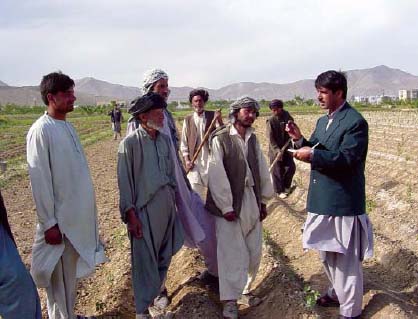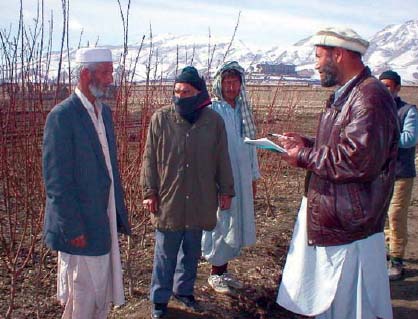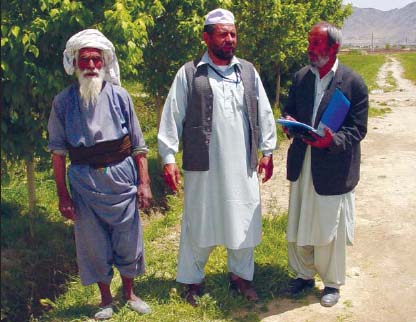
G. DE BAC

G. DE BAC

G. DE BAC
Agriculture is essential in establishing a stable and prosperous society in Afghanistan. The country has been devastated by conflict over the past 23 years and by several years of drought from 1999-2002. Prior to this period of drought and war, 70 to 80 percent of the country’s population was engaged in agriculture. Despite its difficult terrain, adverse climatic conditions and limited arable land, Afghanistan was largely self-sufficient in food and a significant exporter of some agricultural products in the early 1970s.
Horticulture is one of the areas of greatest challenge and opportunity in Afghanistan. The environmental conditions are highly favourable for the large number of endemic horticultural crops. Afghanistan is a unique centre of genetic diversity and of great value to the international horticulture community. Carrot, radish, cherry, plum, apricot, peach, pear, apple, walnut, pistachio, fig, grape, pomegranate, honeydew melon, and almond are among the species present across the country, providing a unique array of useful agro-botanical traits.
In 1972, horticultural commodities supplied 40 to 60 percent of all export earnings. Afghan dried fruit accounted for 60 percent of the world's market. Now horticultural production is drastically less than 1972 levels. Many fields are abandoned, many orchards destroyed, and tree nurseries, seed sources, water, input and knowledge are limited or non-functional.
Afghan farmers show an increased interest in cash crop production, which has a comparative economic advantage over the production of traditional subsistence crops. Horticulture crops are in a stronger position to sustain food security, to provide alternative livelihoods to opium poppy cultivation, and to support the rehabilitation of the Afghan rural economy.
The survey results should be used not only by the people of Afghanistan, but also by all donor countries, private investors and international organizations looking for facts and figures. The aim is also to highlight the need for a long-term development programme to rehabilitate the Afghan horticulture sector.

Serge Verniau
FAO Representative
Afghanistan